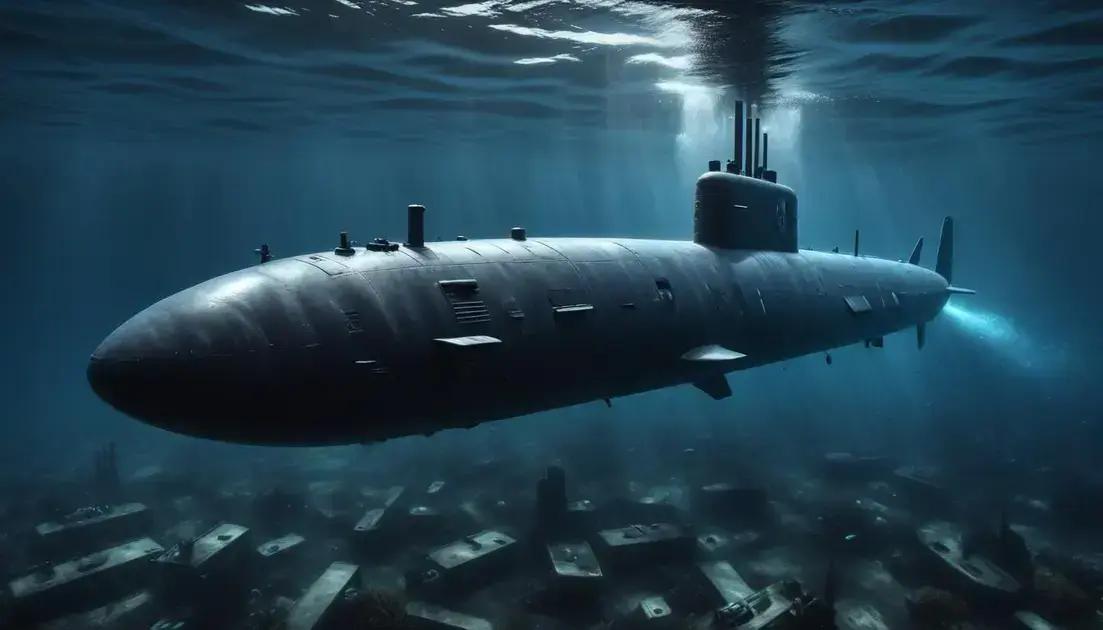
The era of nuclear tests: science or madness?
Nuclear testing significantly impacts global politics, affecting international relations and public perception. These tests often lead to heightened fears and tensions among nations, prompting calls for disarmament and treaties like the Comprehensive Nuclear-Test-Ban Treaty (CTBT). Public activism and education play critical roles in shaping policies and driving change. New monitoring technologies further aim to ensure compliance and peaceful solutions. Overall, understanding the future of nuclear testing involves navigating complex security concerns and the push for a safer world without nuclear threats.
Nuclear tests have long stirred controversy, a mix of awe and dread that begs the question: is this science or madness? Join us as we explore this complex narrative.
Understanding nuclear tests
Understanding nuclear tests is crucial in today’s world. These tests are powerful explosions that help us learn about nuclear energy and weaponry. They are performed to check the effectiveness of nuclear weapons. When a country conducts a nuclear test, it sends a message to others, often sparking fear and concern around the globe.
Nuclear tests can cause significant damage to the environment. The blasts create shockwaves and release harmful radiation. This radiation can impact health for years. People living near test sites often suffer the consequences, even if they are far away.
There are different types of nuclear tests. Some are underground, while others occur above ground. Underground tests are less visible but still harmful. Above-ground tests are more dramatic, often producing bright mushroom clouds that are hard to ignore.
Many countries have signed agreements to limit or stop these tests. Yet, some nations still seek to improve their nuclear capabilities. This raises questions about global security. The idea of a nuclear arms race looms large, creating tension between nations.
Furthermore, public opinion plays a role in how tests are perceived. Some view these tests as necessary for defense, while others see them as reckless. Striking the balance between national security and safety is a complex issue that requires careful thought.
The science behind nuclear explosions
The science behind nuclear explosions involves some complex processes, but it can be understood simply. At the core is nuclear fission, where atoms split apart. This releases a large amount of energy instantly.
When a heavy atom, like uranium or plutonium, is split, it creates smaller atoms and neutrons. These neutrons can then collide with other atoms, causing more fission. This rapidly creates a chain reaction, leading to a massive explosion.
The power of a nuclear explosion is measured in kilotons and megatons. A kiloton is the energy released by one thousand tons of TNT. This shows just how much energy is involved!
Another important aspect is the design of the bomb itself. There are different types, such as the gun-type and implosion-type designs. The gun-type uses two pieces of nuclear material that are brought together, while the implosion-type compresses a solid piece to trigger the explosion. Each design has its advantages and challenges.
Radiation is also a big part of nuclear explosions. It comes from the fission reaction and can be very harmful. This radiation can travel long distances and affect people far away from the blast site.
Overall, understanding the science behind nuclear explosions helps us grasp their impact. It also reminds us of the importance of responsible use of nuclear technology.
Impact on world politics
The impact on world politics from nuclear tests is both significant and complex. These tests often change the way countries interact with each other. When a nation conducts a test, it can create fear and tension among other nations.
Countries with nuclear weapons gain power in international relations. They’re seen as stronger or more influential. This can lead to a race for nuclear weapons among others who feel threatened. Some countries may want to develop their own nuclear capabilities in response.
Nuclear tests can also impact treaties and global agreements. Many countries aim to limit these tests to prevent arms races. Treaties like the Comprehensive Nuclear-Test-Ban Treaty (CTBT) seek to ban all nuclear explosions. However, not every country has signed or followed these agreements.
Public opinion plays a key role, too. Citizens often have strong feelings about nuclear testing. Protests and campaigns can impact government policies. When the public speaks out against tests, leaders may reconsider their stance.
Furthermore, the threat of nuclear weapons can lead to cooperation or conflict. Some nations work together to promote disarmament. Others may engage in military posturing or even conflict due to nuclear tensions.
In summary, the impact of nuclear tests on world politics is vast. It’s a topic that affects security, diplomacy, and international relations among nations.
Public perception and fear
Public perception and fear around nuclear tests can shape policies and influence governments. Many people feel anxious when they hear about these tests. The thought of nuclear explosions can lead to fear for safety and security.
News reports often show images of explosions and describe their power. This helps the public understand the risks involved. Many wonder about the effects of radiation on health and the environment. These concerns are real and can create widespread anxiety.
Additionally, movies and media often portray nuclear weapons in dramatic ways. This can heighten fear and lead to misconceptions about nuclear technology. While some films show heroic actions involving nuclear weapons, they often simplify complex issues.
Protests and campaigns against nuclear testing are common. Activist groups voice concerns to raise awareness. They organize rallies, share information, and encourage people to take action. Public pressure can push governments to reconsider their nuclear policies.
Governments also pay attention to public feelings. If the public is against nuclear testing, leaders may feel the pressure to limit or stop these tests. They may focus more on diplomacy and finding peaceful solutions.
In summary, public perception plays a vital role in shaping the future of nuclear testing. As people become more informed, their voices can lead to significant change.
Future of nuclear testing
The future of nuclear testing is uncertain and filled with challenges. Many countries are discussing how to handle nuclear weapons responsibly. There’s a growing push for disarmament and limiting tests to protect the planet.
International treaties like the Comprehensive Nuclear-Test-Ban Treaty (CTBT) aim to stop nuclear tests. Yet, not all countries have signed this agreement. This creates tension and complicates efforts for global disarmament.
Public opinion also affects the future of nuclear testing. People are increasingly aware of the dangers. Activist movements are calling for governments to take a stand against testing.
New technologies are being developed to monitor nuclear activity. These tools can help verify if countries are following treaties. Satellite imagery, for instance, can detect signs of tests before they happen.
Countries with nuclear weapons face tough choices. They must balance national security with international pressure to reduce arsenals. This complex situation makes the future of nuclear testing a hot topic in world politics.
Education and awareness will play important roles. The more people know about nuclear issues, the more they can advocate for change. It’s vital to keep discussions alive about the ramifications of nuclear testing.
Conclusion
In conclusion, understanding the complex world of nuclear testing is crucial for everyone. These tests shape international relations and influence public opinion. As nations continue to wrestle with nuclear weapons, the importance of treaties and disarmament grows.
Public fears and perceptions also play a significant role in shaping policies. Advocacy and education can drive change, pushing governments to rethink their nuclear strategies. With new technologies for monitoring, there’s hope for a safer future.
Ultimately, a shared commitment to peace and education can help us navigate this critical issue. By staying informed and engaged, we can collectively work towards a safer world without the threat of nuclear testing.


